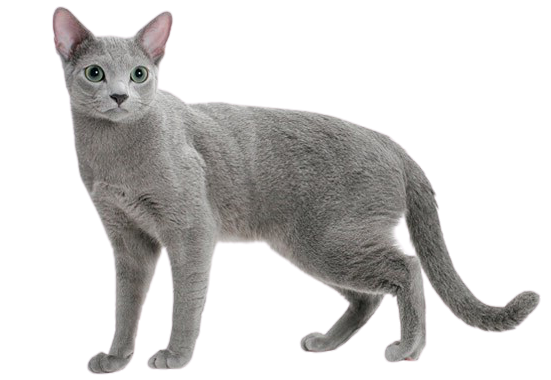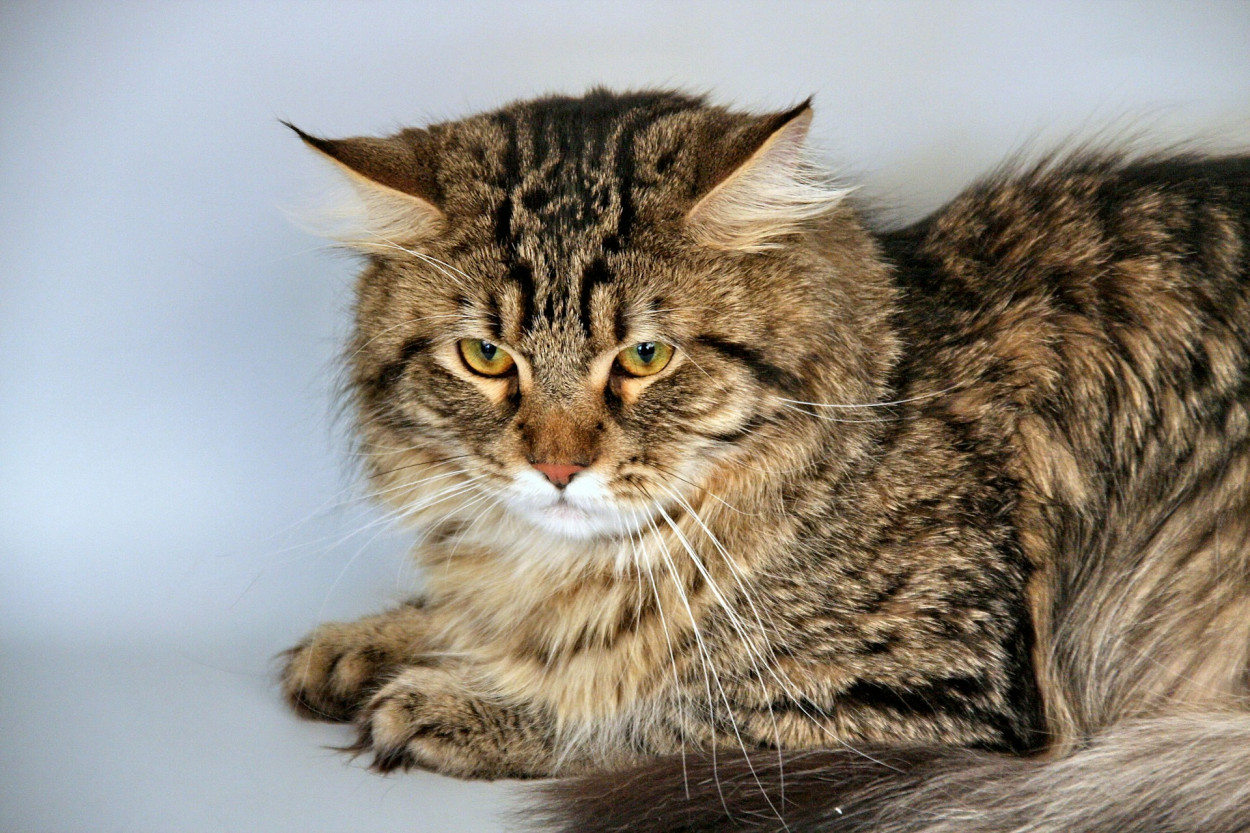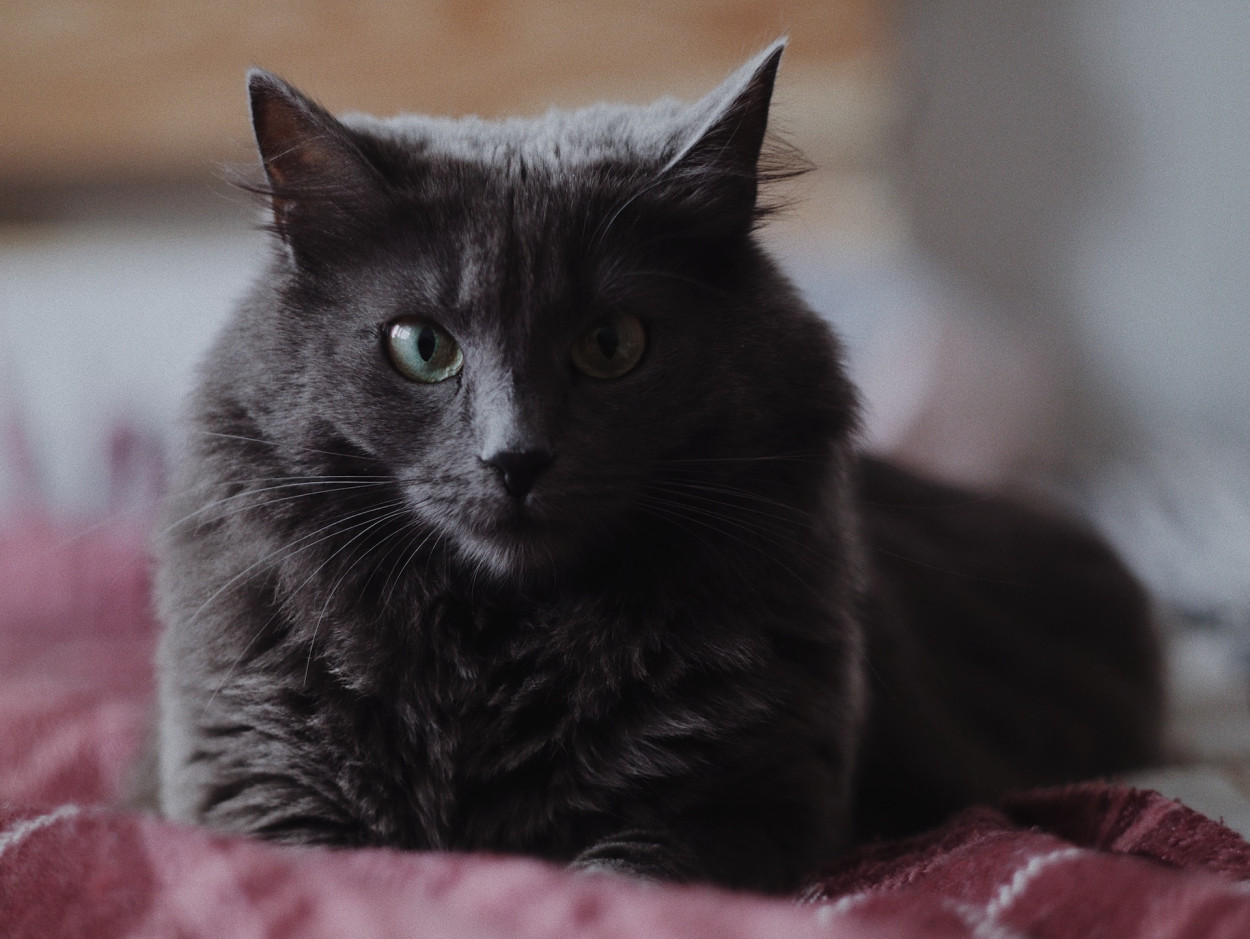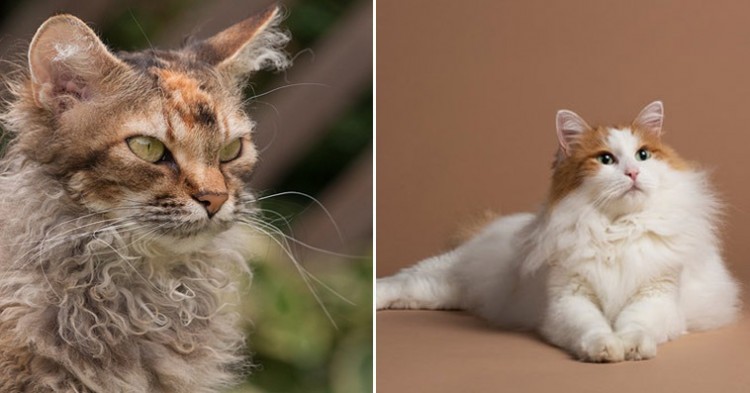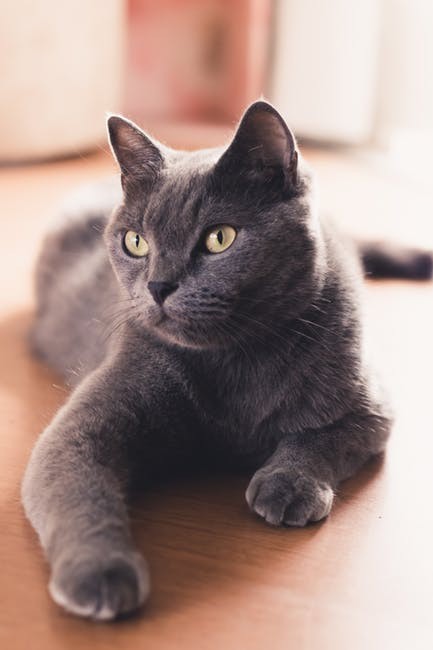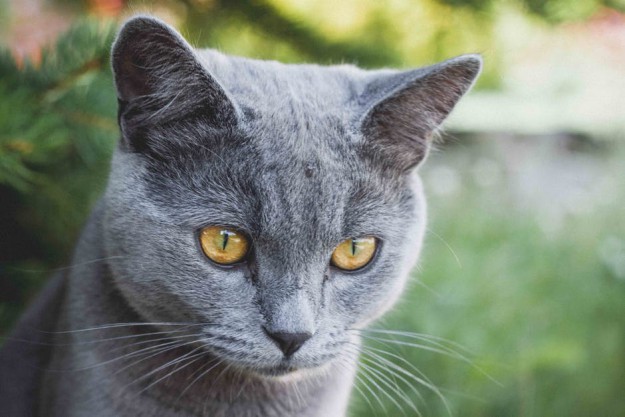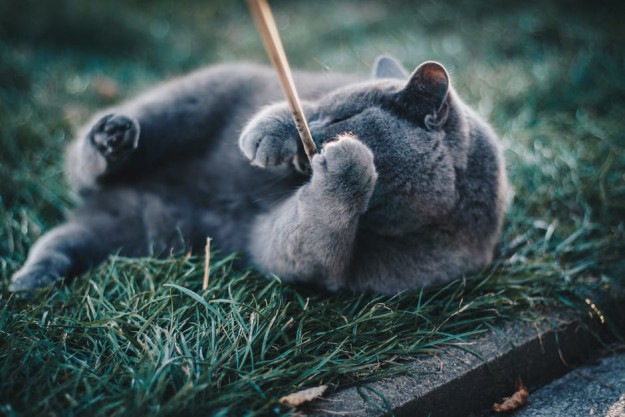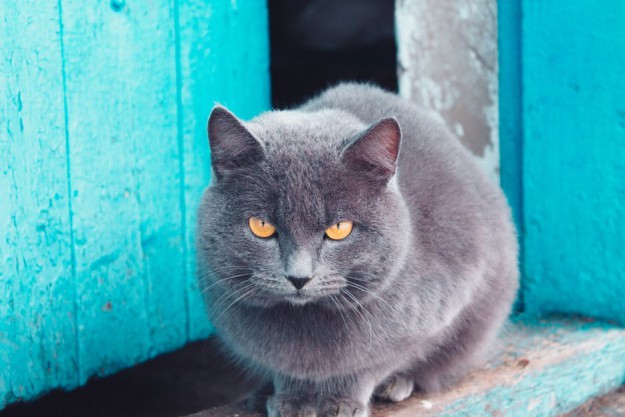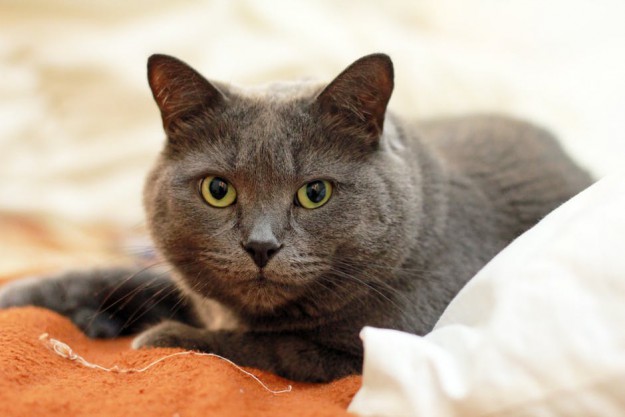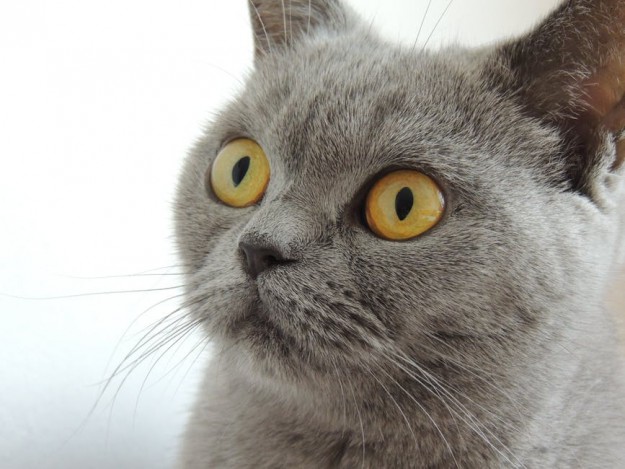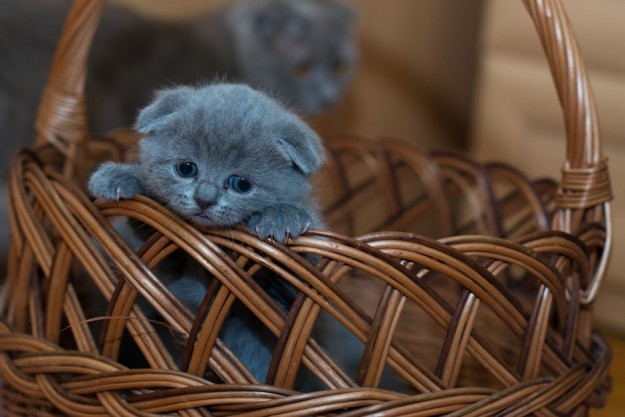Breed Information
| Popularity/Rank | 16 |
|---|---|
| Name | Russian Blue |
| Other names | Archangel Blue, Archangel Cat |
| Origin | Russia |
| Size | Medium |
| Coat | Dense, Plush, Undercoat, Short Hair |
| Lap Cat | Yes |
| Lifespan | 10 to 16 years |
| Temperament |
Dependent, Easy Going, Gentle, Intelligent, Loyal, Playful, Quiet, Active Dependent: The Russian Blue is a very dependent breed of cat. They require a lot of attention and love from their owners. They are not the type of cat that can be left alone for long periods of time. They need to be around people to feel happy and content. If you are looking for a independent cat, the Russian Blue is not the right breed for you. |
| Weight | Female: 7 - 12 pounds, Male: 10 - 15 pounds |
| Colors | Silver, Blue |
| Kitten Prices |
USD $1000 - $1700
If you're looking for a Russian Blue kitten, you can expect to pay anywhere from $1000 to $1700. The price of a Russian Blue kitten varies depending on the breeder, or the reputation of the breeder. Generally speaking, the higher the price, the better the quality of the kitten. So, if you're looking for a high-quality Russian Blue kitten, you should be prepared to pay a bit more. However, even if you don't have a lot to spend, you can still find a Russian Blue that is healthy and has a good temperament. It's just important to do your research and make sure you're getting a kitten from a reputable source. Overall, choosing a Russian Blue kitten is a great decision. They are beautiful cats with lovely personalities. Just be prepared to pay a bit more for one of these special felines! |
Breed Characteristics
| Adaptability | |
|---|---|
| Affection Level | |
| Child Friendly | |
| Dog Friendly | |
| Energy Level | |
| Grooming | |
| Health Issues |
Hemophilia, von Willebrand's Disease, Cystitis, Pyelonephritis, Gastritis, Pancreatitis, Diabetes Mellitus, Obesity, Hyperthyroidism, Hypertension, Asthma, Allergies Is Russian Blue cat Hypoallergenic? There is no definitive answer to this question as everyone's allergies are different. However, many people who are allergic to cats find that they can tolerate Russian Blue cats better than other breeds. This may be because Russian Blue cats produce less of the protein that causes allergies in people. 1. Hemophilia Hemophilia is a genetic disorder that prevents the blood from clotting properly. This can lead to serious internal bleeding and even death. There is no cure for hemophilia, but treatment can help to manage the symptoms and prevent serious complications. 2. von Willebrand's Disease von Willebrand's disease is another disorder that affects the blood's ability to clot. It is the most common inherited bleeding disorder, and can cause serious health problems if not treated properly. 3. Cystitis Cystitis is a condition that causes inflammation of the bladder. It can be painful and uncomfortable, and can lead to serious complications if not treated properly. 4. Pyelonephritis Pyelonephritis is a kidney infection that can be serious if not treated promptly. Symptoms include fever, chills, and pain in the side. 5. Gastritis Gastritis is an inflammation of the stomach lining. It can cause pain, nausea, and vomiting. If left untreated, it can lead to ulcers and bleeding. 6. Pancreatitis Pancreatitis is a serious condition that occurs when the pancreas becomes inflamed. It can be very painful and can lead to serious complications, including death. 7. Diabetes Mellitus Diabetes mellitus is a condition that affects the body's ability to process sugar. It can lead to serious health problems if not treated properly. 8. Obesity Obesity is a serious problem that can lead to many health problems. It is important to maintain a healthy weight to avoid complications. 9. Hyperthyroidism Hyperthyroidism is a condition that causes the thyroid gland to produce too much hormone. This can lead to weight loss, anxiety, and heart problems. 10. Hypertension Hypertension, or high blood pressure, is a serious condition that can lead to heart disease, stroke, and kidney failure. It is important to keep blood pressure under control to avoid complications. 11. Asthma Asthma is a condition that affects the lungs and airways. It can be serious and even life-threatening if not treated properly. 12. Allergies Allergies are a common problem that can cause a variety of symptoms, from mild to severe. If you have allergies, it is important to avoid triggers and to seek treatment if necessary. |
| Intelligence | |
| Shedding | |
| Social Needs | |
| Stranger Friendly | |
| Vocalization | |
| Health Care | The Russian Blue is a healthy cat breed, but like all cats, they require proper care to stay healthy. Their coat is relatively easy to care for, but they do require regular brushing to keep it looking its best. They are also prone to weight gain, so it's important to keep an eye on their diet and make sure they get plenty of exercise. |
History
The Russian Blue is a beautiful cat with a storied history. The breed is believed to have originated in Russia, and it is thought that they were brought to England in the 1860s. The Russian Blue was nearly extinct by the early 1900s, but a few dedicated breeders kept the breed alive. In the 1970s, the Russian Blue became popular in America and has been steadily gaining popularity ever since.
The Russian Blue is a medium-sized cat with a slim, elegant build. They are known for their blue-grey fur, which has a silvery sheen. They also have large, expressive eyes that are green or blue in color. Russian Blues are intelligent and affectionate cats that make great companions.
The ancestry of the Russian Blue is somewhat of a mystery. It is thought that they are related to the Siamese and Angora breeds. However, there is no definitive answer as to where they came from originally. What we do know is that the Russian Blue was recognized as its own distinct breed in 1871 by England's National Cat Club.
So why did the Russian Blue nearly go extinct? There are a few theories. One theory is that World War I decimated the population of Russia, and thus the Russian Blues as well. Another theory posits that during World War II, many Russians fled their homes with their beloved cats, but not all of them made it out alive. Whatever the reason, by the early 1900s there were very few Russian Blues left in existence.
Thankfully, some dedicated breeders kept the flame alive and worked hard to bring back the Russian Blue breed. In 1948, British breeder Nina Ennismore imported two Russian Blues from Sweden and began working on rebuilding the population. By 1970, there were enoughRussian Blues being bred in America that The Cat Fanciers Association (CFA) recognized them as an official breed. And so began the rise of popularity for this beautiful cat breed!
Description
The Russian Blue is a beautiful cat with a sleek, silvery-blue coat. They are medium-sized cats, typically weighing between 5 and 10 pounds. They have a lifespan of 12-15 years. Russian Blues are gentle and affectionate cats with a calm personality. They are not overly active, but they do enjoy playing and climbing. Russian Blues are very intelligent and can be trained to perform tricks. They are also very good at problem solving. Russian Blues get along well with other cats, dogs, and children. They are not particularly vocal cats, but they will communicate with their owners when they need to. Russian Blues are generally healthy cats, but like all breeds, they are susceptible to certain health conditions. These include heart disease, kidney disease, and respiratory problems. Russian Blues have a high level of adaptability and make excellent pets for families with allergies or other pets.



